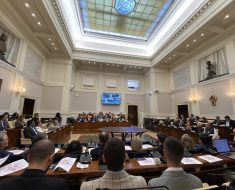Let us focus on what “intelligence” means and precisely what “human intelligence” means.
- According to Wikipedia’s definition (you can skip this for now and read it after reading the article to make complete sense of it quickly)
Intelligence has been defined in many ways: the capacity for abstraction, logic, understanding, self-awareness, learning, emotional knowledge, reasoning, planning, creativity, critical thinking, and problem-solving. It can be described as the ability to perceive or infer information; and to retain it as knowledge to be applied to adaptive behaviors within an environment or context.[1]
Human intelligence is the intellectual power of humans, which is marked by complex cognitive feats and high levels of motivation and self-awareness.[22] Intelligence enables humans to remember descriptions of things and use those descriptions in future behaviors. It gives humans the cognitive abilities to learn, form concepts, understand, and reason, including the capacities to recognize patterns, innovate, plan, solve problems, and employ language to communicate.
Cognition is the “mental action or process of acquiring knowledge and understanding through thought, experience, and the senses”.[2] It encompasses all aspects of intellectual functions and processes such as: perception, attention, thought, imagination, intelligence, the formation of knowledge, memory and working memory, judgment and evaluation, reasoning and computation, problem-solving and decision-making, comprehension and production of language. Cognitive processes use existing knowledge to discover new knowledge.
Wow, there are a lot of nouns, adjectives, and keywords, but let’s try to structure them by understanding the building blocks of human intelligence.
To better the definitions, I chose to segregate all the critical elements described in the definition into logical building blocks. These are my interpretations of understanding intelligence.
- Knowledge and comprehension.
- Problem-solving and Application
- Cognition
Let us understand each of these building blocks using the following picture.
- Each of the subheadings you should be able to see are “as-is” part of the definitions written above.
- I am using the definitions from Wikipedia for each word to explain the concepts.
- Ability to perceive or infer information
I am sitting on the sofa. It feels soft. My eyes are seeing tall structures in front of me with varying heights and colors. I feel the air coming through the door, and I see the cloth hanging from movable rods in front of me moving. I also notice the leaves of the plant moving due to the air.
- Convert it into knowledge — “Translate perceptions into information.”
I observe that there are these structures at this location. They are square-shaped and are of varying heights. One building is cream-colored, and another is white.
- Remember descriptions of things
Hey I have seen a square shaped structure when I was sitting on my sofa.
- Learning and forming concepts
The tall structures are called “Buildings”. The clothe covering balcony is called “Curtains”
- Reasoning — Reason is the capacity to apply logic consciously by drawing conclusions from new or existing information, with the aim of seeking the truth.
I observe that the leaves of the plant are moving because of the air. The air is touching the curtains before reaching me. Thus, the air has the capability to move objects. Thus I deduce that The curtains are moving because of the air. (deductive reasoning)
- Critical thinking — Critical thinking focuses on the analysis and evaluation of information, evidence, or arguments to form a judgment or decision.
Could someone be moving the rods?
Is air the only reason the curtains are moving?
If air can move objects, why am I not moving?
- Logic understanding — Logic is the study of correct reasoning
I do not see anyone in the picture touching the rod, thus it might not be the reason.
I am heavy, thus I am not moving.
Leaves are moving due to air, so is curtain — both of them are lightweight and are in the path of air flow.
- Abstraction — Abstraction is a process wherein general rules and concepts are derived from the usage and classification of specific examples, literal (real or concrete) signifiers, first principles, or other methods.
When a light weighted object is in the path of airflow it moves
I want to reduce the airflow into the room and I plan to replace the curtains. I need to find the curtain shop. I need to find the material. I need to find measurements. I should install it.
I am conscious of the softness of the sofa, the sight of the tall buildings, and the feeling of the air coming through the door.
I am aware that someone observing me might think my actions are unusual.
I feel calm seeing this balcony, but also sad when reminded of the trees cut down to build these structures.
- Self awareness — self-awareness is the experience of one’s own personality or individuality
I am aware that I am the one perceiving these experiences and that I am sitting on the sofa, reflecting on my surroundings. I do not like the windows obstructuring my view. I have certain likes, dislikes, choices, preferences.
- Imagination and Creativity (So far, everything above is about applying the knowledge but this focuses on generation of expertise)
I want to add ten more pots and cover the balcony with greenery and improve the asthetics
- Adaptive behaviors within an environment or context
My flatmate does like to have tea in this balcony every morning and I cannot fill this with pots completely. He might not find this idea welcoming
I have pets which might be alergetic to some pots and i should not keep them here
Beyond this, Humans have physical abilities that, combined with this intelligence, make us much more powerful.
- Our sensory organs
- Manual dexterity
- Our mobility and navigation
- Coordination between our body and mind.
- Our ability to communicate using language




